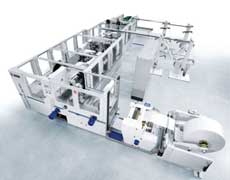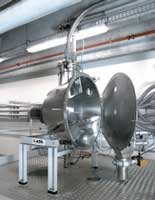Vietnam’s plastics industry: ready for the world
Also, download this story from the electronic issue here
Vietnam’s plastics industry is demonstrating rapid growth and is poised to reap the rewards of opportunities disguised as challenges, such as Brexit and TPP, says Angelica Buan. The report is also based on the recently concluded Propak Vietnam, held in Ho Chi Minh City from 21-23 March. Some 351 exhibitors from 32 countries exhibited on a gross area of 6,100 sq m with 7, 288 trade visitors from some 39 countries visiting the show, said organiser SES Vietnam Exhibition Services.
Double edged opportunities from TPP/Brexit
What do the US-led Trans-Pacific Partnership (TPP) and Brexit, UK’s planned withdrawal from the European Union, have in common for Vietnam? Both will likely create opportunities for the country’s manufacturing industry!
The TPP, a faction of negotiating partners that include Vietnam, Australia, Brunei, Canada, Chile, Malaysia, Mexico, New Zealand, Peru, and Singapore, will most likely be cancelled under the new US administration of President Donald Trump.
Analysts have observed that if there is one country that could have benefited significantly from TPP, it is Vietnam, because it would allow for increased market access for everything it is able to produce – from clothing and electronics to footwear. The deal also represented a strategic relationship between the US and Vietnam, their mutual goals that would also touch on their opposition to China’s territorial claims in the South China Sea.
Based on the Office of the United States Trade Representatives data, Vietnam is the US’s 27th largest goods trading partner with US$29.7 billion in total of (twoway) goods trade during 2013. Vietnam was the US’s 20th largest supplier of goods imports in 2013, totalling US$24.6 billion, a 21.6% increase from 2012.
Its top import categories included apparel, footwear, furniture and bedding, and machinery. Meanwhile, US imports of agricultural products, such as nuts and coffee, totalled US$1.5 billion in 2013, therefore making Vietnam its 20th largest agro supplier.
However, the demise of TPP does not leave Vietnam in limbo. According to Manila-based Asian Development Bank (ADB), Vietnam has, to date, 15 free trade agreements (FTAs) on the table that it can still sink its teeth into in order to achieve its growth targets.
Meanwhile, Brexit, expected to take effect in 2019, will affect UK’s global trade relations, including that with ASEAN countries. But Vietnam’s trade deals with the EU will give it an advantage, given that it has already concluded negotiations with the EU, whereas its other ASEAN neighbours have yet to cement FTAs with the EU.
According to a report by Asia Briefing, a subsidiary of Hong Kong-based consulting firm Dezan Shira & Associates, stalling EU trade negotiations with other member states (in the wake of the Eurozone crisis) will make Vietnam an important trade ally for low cost investment from a European perspective.
“In the face of lowered purchasing power within the Eurozone, consumers will be on the lookout for low cost goods. Given its unique position in low cost manufacturing, Vietnam will likely be more competitive than ever among European consumers. The longer that negotiations are drawn out in other ASEAN states, the more solidified Vietnam’s advantage will become,” Asia Briefing said, adding that Vietnam is likely to be the big winner in the face of Brexit.
Plastics sector, a growth driver
Vietnam’s plastic sector has shown tremendous growth in recent years with a growth rate of 16%- 18%/year, yet, it is considered a greenhorn compared to other more matured sectors such as mechanical, chemical and textile, according to a 2016 report by Vietcombank Securities (VCBS).
The fast-paced growth is attributed to high demand from sectors reliant on plastics, including consumer goods, construction, telecommunication and others. VBS finds that plastic consumption per capita increased significantly from 33kg/person/year in 2010 to 41 kg/person/year in 2015. Nevertheless, if compared to the average consumption in Asia at 48.5kg/person/year, and the rest of the world at 69.7 kg/person/year, Vietnam’s consumption is much lower.
Vietnam has several trade partners for plastic products with Japan being its largest export market for consumer products including plastic bags. Europe and the US are also potential markets, but between the two, the anti-dumping tax levied by the US on plastic bags provides more modest turnover for Vietnam.
The Vietnam Trade Promotion Agency (VIETRADE) affirms that the plastic manufacturing industry is one the fastest growing industries in Vietnam, sustaining average growth of 20%-25% a year.
The Vietnam Plastics Association also added that most of the production is focused on sectors such as packaging (37%), household appliances (29%), construction (18%) and technical products (15%).
Packaging accounts for the highest share in the plastics industry structure due to a strong development of end-product industries such as food and beverage, according to VBS. After packaging, the construction industry is also flourishing along with the recovery of the real estate and construction industry.
Packaging industry becomes sophisticated
The rising urbanisation that is breeding a fast-paced lifestyle among urbanites is promoting convenience in packaging, and therefore its growth, said market intelligence firm Euromonitor in its 2016 Packaging Industry in Vietnam report.
In 2015, the packaging segment was valued at US$4.3 billion, said Hanoi-headquartered Business Information Services (Biinform). The sector is dominated by multi-layer flexible packaging, which had a market size of US$891 million in 2015; and the flexible packaging, which serves a wide range of end-user markets.
Taking the cue, at the recently concluded Propak show, Italy-based extrusion machinery maker Amut Group says it set up technical operations in the country in 2015, and has since wrapped up several contracts for its thermoforming machinery.
Meanwhile, German exhibitor Gabler Thermoform lauded the country’s growth trajectory. Promoting its small/medium-capacity forming machinery, Gabler said that the market is big, yet competitive. It has appointed a local agent Rieckermann.
Another thermoforming machine maker Illig Maschinenbau participated at the event for the first time. However, the Germany-headquartered firm said it had already garnered the interest of customers looking for “big capacity” solutions for bottles, cups and trays.
Expressing moderate satisfaction was Taiwan’s Keenpro, which was promoting its stretch blow moulding machine for PET bottles.
Show of potential in an international platform
Foreign investors have long taken notice of the potentials of Vietnam, which is considered more laidback than its high-key ASEAN neighbours like Thailand, Malaysia or Indonesia. Biinform says that Vietnamese firms heavily rely on imported raw materials as well as machinery and equipment.
Exhibiting at the Propkak Vietnam show, German
 machinery maker Windmöller & Hölscher (W&H) says
it has already an established presence in Vietnam
and clinched customers for its film lines and flexo
printing machines, as well as orders for high-speed
woven bag conversion machinery.
machinery maker Windmöller & Hölscher (W&H) says
it has already an established presence in Vietnam
and clinched customers for its film lines and flexo
printing machines, as well as orders for high-speed
woven bag conversion machinery.
In 2015, through its subsidiary W&H Machinery (formerly BSW Machinery), it installed the Convertex SLC 120 high-speed woven bag machine for Sadico Vietnam. The processor is able to produce both single ply AD proTex sacks as well as 2-ply AD proTex sacks, not only allowing for lighter bags and reduced material consumption but also avoiding sewing or gluing of the sack with adhesives. The W&H patent allows Sadico to seal a block-bottom valve sack with the usage of hot air instead. The Convertex allows production rates of 120 AD proTex bags/minute.

Sadico also invested in the extrusion coating line ecoTex 1600L and advanTex circular weaving looms. Following this, Sadico placed a repeat order for a second Convertex SLC plus a Tiratex tape stretching line. The combination of the tape stretching line and Convertex allows Sadico to produce light and strong cement bags, says W&H.
Meanwhile, also at Propak, German materials handling equipment specialist Azo introduced its Mixomat to Southeast Asia. It is said to be an efficient system that integrates several functions such as conveying, dosing, weighing and mixing in one machine.
In 2016, Azo supplied to a PVC plant in Vietnam the automated materials handling system. Plus, the company said it has already bagged several other contracts, adding that the country showed growing potential for high technology.
Challenges to be overcome by plastics sector
In conclusion, while Vietnam’s plastics industry undoubtedly shows a competitive edge among its peers in the ASEAN bloc, it still has to overcome certain hurdles, which is normal for a transitioning economy.
According to a report by the Vietnam Industry Research and Consultant (VIRAC), the plastics industry relies heavily on imported raw materials, with only 30% supplied domestically. In 2015, Vietnam imported about 3.9 million tonnes of raw materials, up by 13.6% from 2014.
VIRAC also said that of the total demand for raw plastics, such as the PP, PE and PVC, most is imported from Saudi Arabia, South Korea, Taiwan, Thailand, China and Singapore.
Nevertheless, given the challenges the country is facing, Vietnam is charging forward to keep pace with the rest of the world, if not its neighbours.
(PRA)Copyright (c) 2017 www.plasticsandrubberasia.com. All rights reserved.





















































